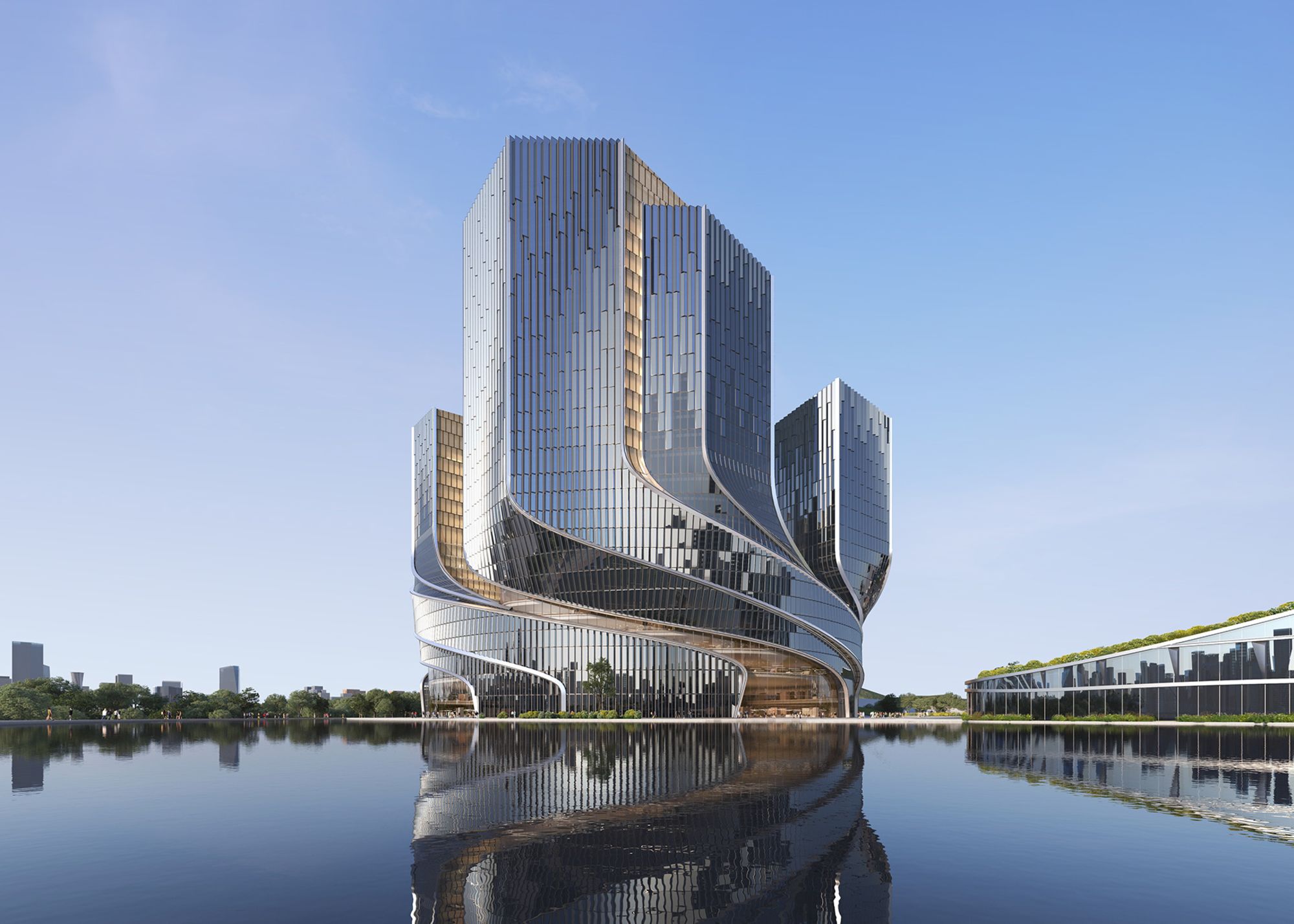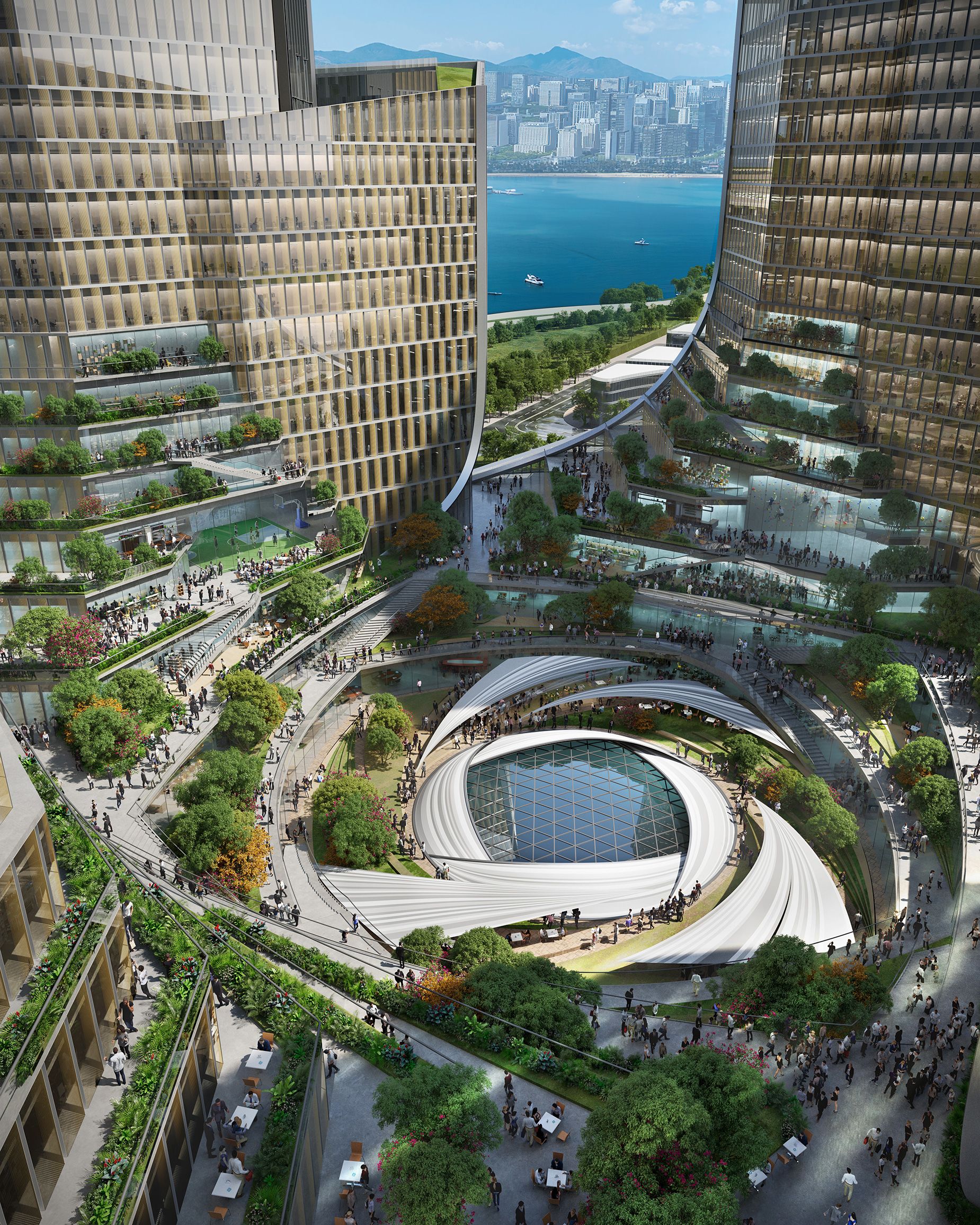
The architects behind Chinese tech giant Tencent’s vast new campus unveiled their plans for the site on Thursday, describing their helix-inspired centerpiece as the “headquarters of the future.”
Set to accomodate over 23,000 employees across nearly 500,000 square meters (5.38 million square feet), the campus will be almost twice the size of Apple’s California headquarters when it opens in five years’ time.
Digital renderings of the design, shared exclusively with CNN by architects Büro Ole Scheeren, show four towers spiraling out from an open central space dubbed the “Vortex Incubator.” The landmark structure will become the focal point of an ambitious — and largely car-free — “future city” being built by Tencent, owner of messaging services WeChat and QQ, in the southern Chinese city of Shenzhen.
Speaking to CNN via video call, the architecture firm’s founder, Ole Scheeren, said his building’s “swirling vortex geometry” will create an “ecosystem where everything comes together, where work merges into a very collaborative interactive environment.”

The German architect’s vision was chosen by Tencent, China’s most valuable publicly traded company, following an international design competition.
The lower floors of the scheme, which is named Tencent Helix, connect the office towers via a large lobby and communal educational, recreational, sports and fitness facilities, including basketball, tennis and badminton courts. At ground level, restaurants and shops will erode the distinction between public and private space
This layout means that the building “doesn’t have a front and a back,” said Scheeren, who is known for co-designing Beijing’s famous CCTV Headquarters. He added that the structure’s appearance will vary depending on which angle it is viewed from: “It remains very recognizable, but it changes quite a lot in a subtle way.”
City within in a city
First unveiled by Tencent in 2020, the wider neighborhood — previously known as “Net City” — is being built on a stretch of reclaimed land jutting out into the Pearl River estuary. It will connect to the rest of Shenzhen via ferries and the city’s subway system. (And although the district is “predominantly car free,” Scheeren said, employees will be able to access Tencent’s headquarters via road bridges linking to parking spaces and drop-off points.)
The technology firm’s headquarters will be one of dozens of structures, including schools and public amenities, on the site. While some of the buildings are already under construction, others have not yet had their designs unveiled.

To create a sense of cohesion between the new headquarters and its surroundings,

No comments:
Post a Comment